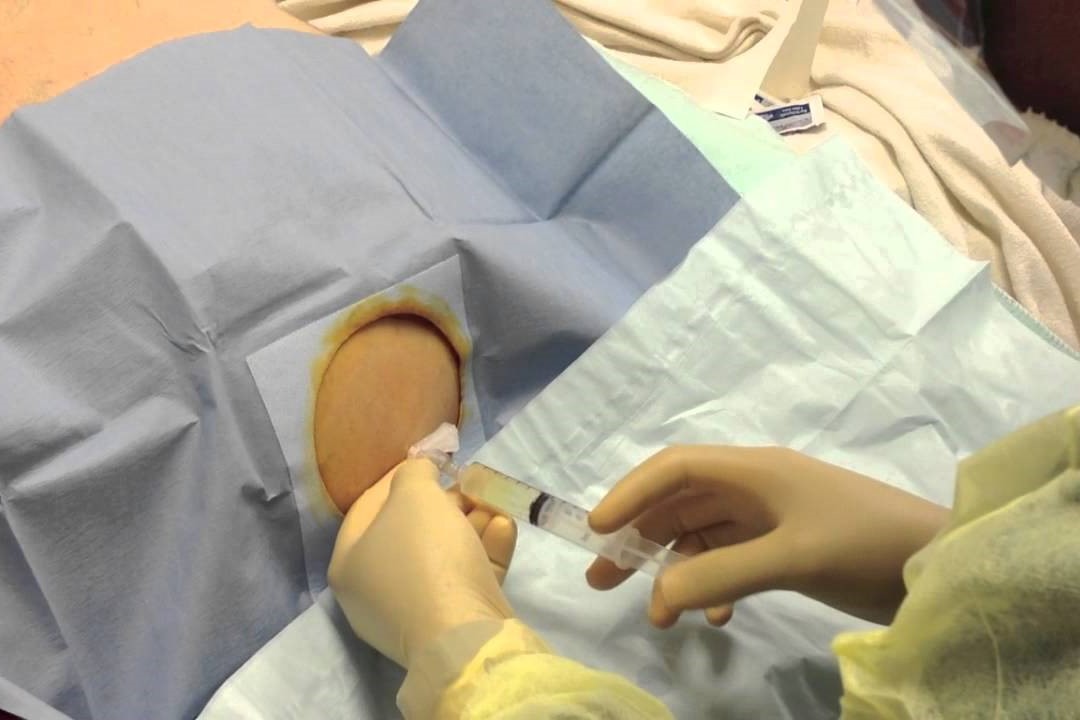
Paracentesis: what it is and why it is important to collect ascitic fluid
Abdominal paracentesis is used to collect ascitic fluid for analysis. It can also be used to remove ascites under tension that causes breathing difficulty or pain or as a treatment for chronic ascites
Absolute contraindications to paracentesis include
- Severe uncorrectable blood clotting disorders
- An infection of the abdominal wall
- Bowel obstruction (unless an area of peritoneal fluid has been identified that can be safely reached using imaging studies)
Relative contraindications are poor patient cooperation, the presence of surgical scars at the puncture site, large intra-abdominal masses and severe portal hypertension with abdominal collateral circles.
Before paracentesis, a blood count with formula, platelet count and a coagulation study are performed
After emptying the bladder, the patient sits in bed with the head elevated 45 to 90°.
In patients with obvious and marked ascites, a midpoint between the umbilicus and the pubic bone is located and disinfected with an antiseptic solution and alcohol.
Two other possible sites for performing a paracentesis are located approximately 3-5 cm above and medial to the anterosuperior iliac spine on both sides.
In patients with moderate ascites, precise localisation of the ascitic fluid is indicated by abdominal ultrasound.
Positioning the patient in lateral decubitus, moving the intended insertion site downwards, also promotes migration of the air-filled intestinal loops upwards away from the entry point.
In a sterile procedure, the area is anaesthetised up to the peritoneum with lidocaine 1%.
For diagnostic paracentesis an 18-22 gauge (1.5 inch or 3.5 inch) needle attached to a 30-50 mL syringe is inserted into the peritoneum (a popping sensation is usually felt).
The fluid is gently aspirated and sent for cell counting, protein or amylase titration, cytology or culture examination as needed.
For therapeutic (large volume) paracentesis, an 18-14 gauge (1.5 or 3.5 inch) cannula connected to a vacuum suction system is used to collect up to 8 L of ascitic fluid.
Concomitant infusion of EV albumin is recommended during large-volume paracentesis to avoid significant changes in intravascular volume and post-procedural hypotension.
Haemorrhage is the most frequent complication of paracentesis
Occasionally, in the case of ascites under tension, a prolonged discharge of ascitic fluid may occur at the needle insertion point.
Read Also:
Emergency Live Even More…Live: Download The New Free App Of Your Newspaper For IOS And Android
What Is Empyema? How Do You Deal With A Pleural Effusion?
Ascites: What It Is And What Diseases It Is A Symptom Of
Pain Management In Blunt Thoracic Trauma
Acute Hyperinflammatory Shock Found In British Children. New Covid-19 Pediatric Illness Symptoms?
Accumulation Of Fluid In The Peritoneal Cavity: Possible Causes And Symptoms Of Ascites


